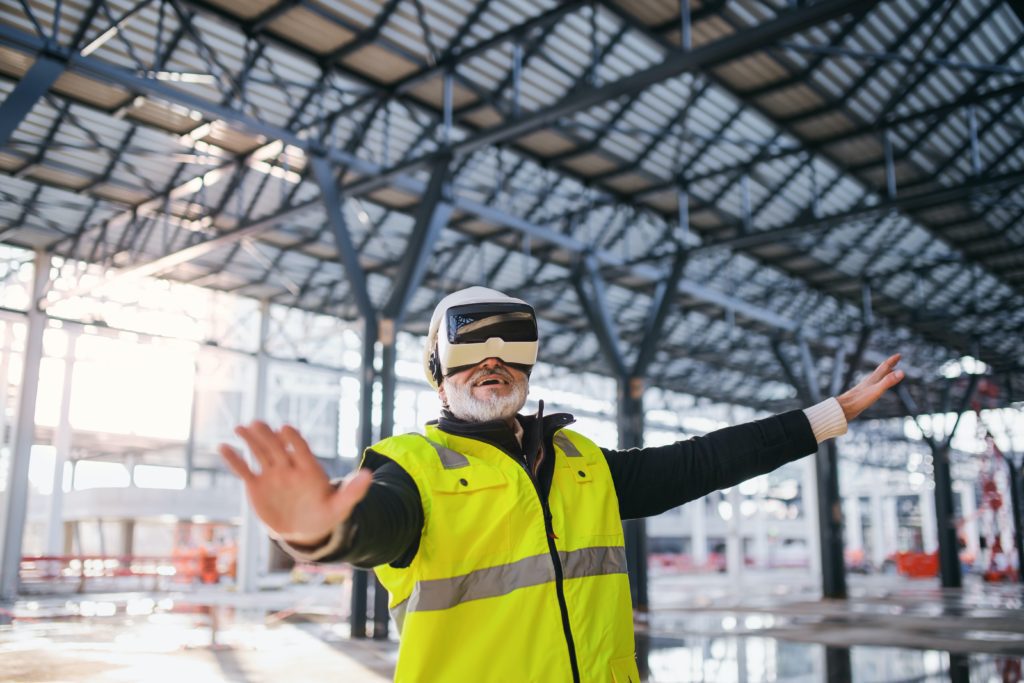Augmented reality (AR) and virtual reality (VR) are two of the most exciting and rapidly growing technologies in the world. AR and VR have the potential to transform a wide range of industries, from entertainment and gaming to education and healthcare. In this blog post, we’ll explore some of the potential future applications of AR and VR in industry.
-
Entertainment
One of the most promising areas for AR and VR is the entertainment industry. AR and VR technologies have the potential to create incredibly immersive and engaging experiences for users. For example, imagine using VR to transport yourself to a fantastical world, where you can explore and interact with other players in real time. Or imagine using AR to enhance your gaming experience, with virtual objects and characters appearing in the real world around you.

-
Education
Another area where AR and VR could have a big impact is education. AR and VR technologies have the potential to revolutionize the way we learn. For example, imagine using VR to take a virtual field trip, where you can visit and explore places that would be impossible or impractical to visit in person. Or imagine using AR to enhance your study materials, with virtual notes and diagrams appearing alongside the real world objects you’re studying.
One example of a company that is using augmented reality (AR) and virtual reality (VR) in the education industry is zSpace. zSpace is a leading provider of AR and VR solutions for education, and has developed a range of tools and applications for schools and universities. For example, zSpace’s AR and VR technology allows students to visualize and interact with 3D models of objects and concepts in real-time. This allows for a more immersive and engaging learning experience, and can help students to better understand complex subjects such as anatomy, physics, and chemistry. zSpace’s AR and VR solutions have been used by schools and universities around the world, and have been shown to improve student engagement and performance in a range of subjects.
-
Healthcare
AR and VR could also have significant applications in the healthcare industry. For example, imagine using VR to provide a more immersive and engaging experience for patients undergoing rehabilitation or therapy. Or imagine using AR to provide doctors and nurses with real-time information and guidance during complex procedures.
-
Manufacturing
The potential applications of AR and VR in industry go far beyond the examples mentioned above. For example, AR and VR could be used in the manufacturing industry to create immersive training simulations for workers. This could allow workers to learn and practice complex tasks in a safe and controlled environment, without the need for expensive and time-consuming real-world training.

-
Construction
In the construction industry, AR and VR could be used to create virtual models of buildings and infrastructure, allowing architects, engineers, and contractors to visualize and collaborate on projects in real-time. This could help to reduce costs and improve the efficiency of the design and construction process.
One example of a company that is using augmented reality (AR) and virtual reality (VR) in the construction industry is Trimble. Trimble is a leading provider of technology solutions for the construction industry, and has developed a range of AR and VR tools for architects, engineers, and contractors. For example, Trimble’s Mixed Reality solution allows users to view 3D models of buildings and infrastructure in real-time, using AR technology. This allows users to visualize and collaborate on projects in a more immersive and engaging way. Trimble’s VR solutions, such as the Trimble XR10, allow users to experience construction projects in a virtual environment, allowing for more realistic and effective training and simulations.
-
Retail
The retail industry could also benefit from AR and VR technologies. For example, imagine using AR to create virtual storefronts, where customers can browse and purchase products in a virtual environment. Or imagine using VR to create immersive and engaging experiences for customers, such as virtual fashion shows or product demonstrations.
Overall, the potential applications of AR and VR in industry are vast and varied. These technologies have the potential to revolutionize the way we work and live, creating new opportunities and improving existing processes in a wide range of industries. While there are still challenges to overcome, such as the cost and availability of AR and VR hardware and software, the future looks bright for these exciting technologies.
